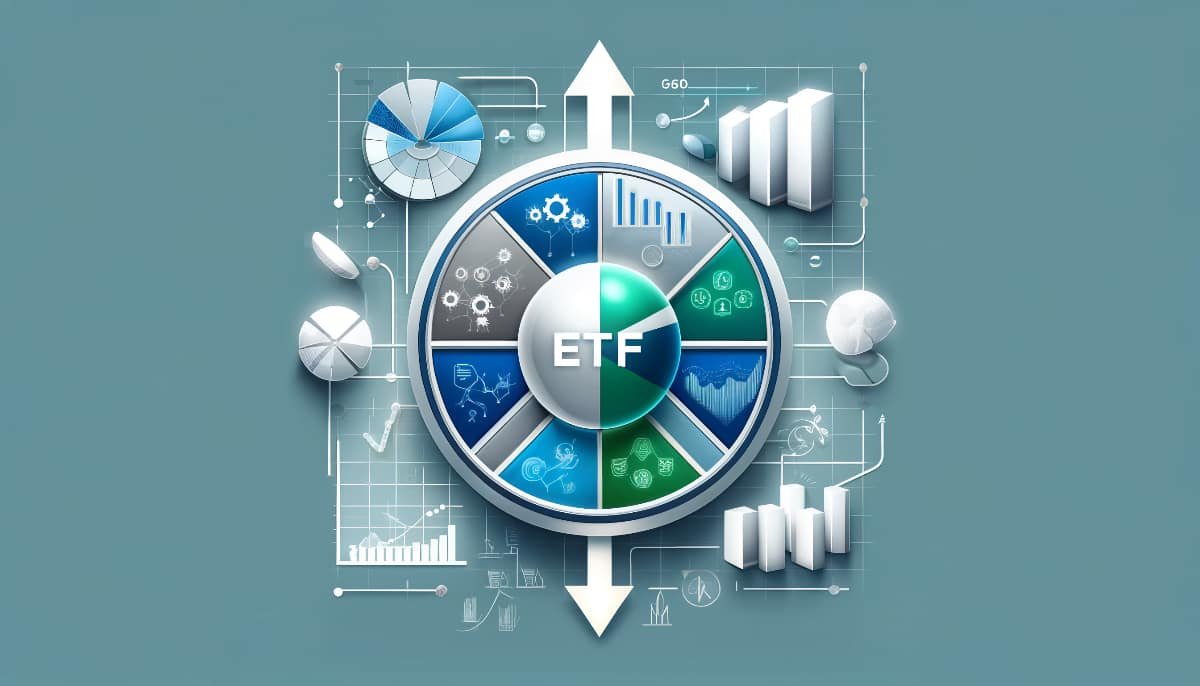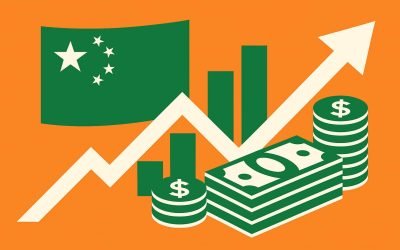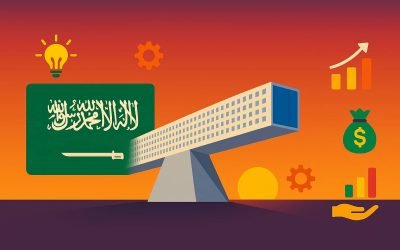Understanding Exchange-Traded Funds (ETFs)
Exchange-Traded Funds (ETFs) have become a cornerstone of modern investment strategies, offering a blend of flexibility, diversification, and cost-efficiency. This article delves into the key advantages of incorporating ETFs into your portfolio, providing a comprehensive guide to their benefits and how they can enhance your investment strategy.
What Are ETFs?
ETFs are investment funds that are traded on stock exchanges, much like individual stocks. They hold assets such as stocks, commodities, or bonds and generally operate with an arbitrage mechanism designed to keep trading close to its net asset value, though deviations can occasionally occur.
History and Evolution of ETFs
The first ETF, the SPDR S&P 500 ETF (SPY), was introduced in 1993. Since then, the ETF market has grown exponentially, with thousands of ETFs now available, covering a wide range of asset classes and investment strategies. This growth reflects the increasing recognition of the advantages that ETFs offer to investors.
Key Advantages of ETFs
1. Diversification
Diversification is a fundamental principle of investing, aimed at reducing risk by spreading investments across various assets. ETFs provide an easy and cost-effective way to achieve diversification.
- Broad Market Exposure: ETFs can track a wide range of indices, providing exposure to entire markets or specific sectors.
- Asset Class Variety: Investors can diversify across different asset classes, including equities, bonds, commodities, and real estate.
- Geographical Diversification: ETFs offer access to international markets, allowing investors to diversify globally.
2. Cost-Efficiency
ETFs are known for their cost-efficiency, which can significantly enhance investment returns over time.
- Lower Expense Ratios: ETFs typically have lower expense ratios compared to mutual funds, reducing the cost of investment management.
- Tax Efficiency: The structure of ETFs allows for more tax-efficient trading, potentially reducing capital gains taxes.
- Reduced Transaction Costs: Trading ETFs incurs lower transaction costs compared to buying individual stocks or bonds.
3. Liquidity
Liquidity is a crucial factor in investment decisions, and ETFs offer high liquidity due to their trading on stock exchanges.
- Ease of Trading: ETFs can be bought and sold throughout the trading day at market prices, providing flexibility and convenience.
- Market Orders: Investors can use various order types, including market orders, limit orders, and stop orders, to manage their trades effectively.
- High Trading Volumes: Many ETFs have high trading volumes, ensuring that investors can enter and exit positions with minimal impact on the market price.
4. Transparency
Transparency is a significant advantage of ETFs, providing investors with clear and timely information about their investments.
- Daily Holdings Disclosure: Most ETFs disclose their holdings on a daily basis, allowing investors to see exactly what assets they own.
- Benchmark Tracking: ETFs aim to track specific indices, providing a clear benchmark for performance comparison.
- Regulatory Oversight: ETFs are subject to regulatory oversight, ensuring that they operate in a transparent and fair manner.
5. Flexibility
ETFs offer a high degree of flexibility, allowing investors to implement a wide range of investment strategies.
- Strategic Asset Allocation: Investors can use ETFs to build diversified portfolios that align with their long-term investment goals.
- Tactical Trading: ETFs can be used for short-term trading strategies, such as sector rotation or market timing.
- Hedging: ETFs can be used to hedge against market risks, providing a tool for risk management.
Types of ETFs
There are various types of ETFs available, each designed to meet different investment objectives and strategies.
1. Equity ETFs
Equity ETFs invest in stocks and aim to replicate the performance of a specific equity index.
- Broad Market ETFs: These ETFs track broad market indices, such as the S&P 500 or the FTSE 100.
- Sector ETFs: These ETFs focus on specific sectors, such as technology, healthcare, or energy.
- Thematic ETFs: These ETFs invest in companies related to specific themes, such as clean energy or artificial intelligence.
2. Bond ETFs
Bond ETFs invest in fixed-income securities and aim to replicate the performance of a specific bond index.
- Government Bond ETFs: These ETFs invest in government bonds, such as US Treasuries or UK Gilts.
- Corporate Bond ETFs: These ETFs invest in corporate bonds issued by companies.
- Municipal Bond ETFs: These ETFs invest in municipal bonds issued by local governments.
3. Commodity ETFs
Commodity ETFs invest in physical commodities or commodity futures contracts.
- Precious Metals ETFs: These ETFs invest in precious metals, such as gold, silver, or platinum.
- Energy ETFs: These ETFs invest in energy commodities, such as oil or natural gas.
- Agricultural ETFs: These ETFs invest in agricultural commodities, such as wheat or corn.
4. Real Estate ETFs
Real Estate ETFs invest in real estate investment trusts (REITs) or real estate-related securities.
- Domestic Real Estate ETFs: These ETFs invest in real estate assets within a specific country.
- International Real Estate ETFs: These ETFs invest in real estate assets across multiple countries.
- Sector-Specific Real Estate ETFs: These ETFs focus on specific real estate sectors, such as commercial or residential properties.
How to Choose the Right ETF for Your Portfolio
Selecting the right ETF for your portfolio involves considering various factors to ensure that the investment aligns with your financial goals and risk tolerance.
1. Investment Objective
Determine your investment objective, whether it is capital appreciation, income generation, or risk management. Choose an ETF that aligns with your objective.
2. Risk Tolerance
Assess your risk tolerance and select an ETF that matches your risk profile. Consider factors such as volatility, asset class, and geographical exposure.
3. Expense Ratio
Compare the expense ratios of different ETFs. Lower expense ratios can enhance your investment returns over time.
4. Liquidity
Consider the liquidity of the ETF. Higher trading volumes and tighter bid-ask spreads indicate better liquidity.
5. Performance
Review the historical performance of the ETF and compare it to its benchmark index. Consistent performance in line with the benchmark is a positive indicator.
Building a Diversified Portfolio with ETFs
ETFs can be used to build a diversified portfolio that aligns with your investment goals and risk tolerance. Here are some strategies for constructing a diversified ETF portfolio:
1. Core-Satellite Approach
The core-satellite approach involves building a core portfolio of broad market ETFs and adding satellite positions in specific sectors or themes to enhance returns.
- Core Portfolio: Use broad market ETFs, such as S&P 500 or FTSE 100 ETFs, as the foundation of your portfolio.
- Satellite Positions: Add sector-specific or thematic ETFs to capture growth opportunities in specific areas.
2. Asset Allocation Strategy
Implement an asset allocation strategy by diversifying across different asset classes, such as equities, bonds, commodities, and real estate.
- Equity ETFs: Allocate a portion of your portfolio to equity ETFs for capital appreciation.
- Bond ETFs: Include bond ETFs for income generation and risk reduction.
- Commodity ETFs: Add commodity ETFs for inflation protection and diversification.
- Real Estate ETFs: Incorporate real estate ETFs for exposure to the real estate market.
3. Geographical Diversification
Diversify your portfolio geographically by investing in ETFs that provide exposure to different regions and countries.
- Domestic ETFs: Invest in ETFs that focus on your home country’s market.
- International ETFs: Include ETFs that provide exposure to international markets, such as emerging markets or developed markets outside your home country.
- Global ETFs: Consider global ETFs that offer a mix of domestic and international exposure.
Potential Risks and Considerations
While ETFs offer numerous advantages, it is essential to be aware of potential risks and considerations when investing in them.
1. Market Risk
ETFs are subject to market risk, meaning their value can fluctuate based on changes in the underlying assets’ prices. Diversification can help mitigate this risk, but it cannot eliminate it entirely.
2. Tracking Error
Tracking error refers to the difference between an ETF’s performance and its benchmark index. Factors such as management fees, trading costs, and sampling methods can contribute to tracking error.
3. Liquidity Risk
While many ETFs are highly liquid, some may have lower trading volumes, leading to wider bid-ask spreads and potential difficulties in buying or selling shares at desired prices.
4. Counterparty Risk
ETFs that use derivatives or engage in securities lending may be exposed to counterparty risk, where the other party in the transaction may default on its obligations.
5. Regulatory Risk
Changes in regulations or tax laws can impact the performance and tax treatment of ETFs. It is essential to stay informed about regulatory developments that may affect your investments.

Conclusion
ETFs offer a range of advantages that make them an attractive option for investors seeking diversification, cost-efficiency, liquidity, transparency, and flexibility. By understanding the different types of ETFs and how to choose the right ones for your portfolio, you can build a diversified investment strategy that aligns with your financial goals and risk tolerance. While it is essential to be aware of potential risks, the benefits of ETFs make them a valuable tool for modern investors.
Q&A Section
| Question | Answer |
|---|---|
| What is an ETF? | An ETF, or Exchange-Traded Fund, is an investment fund that is traded on stock exchanges and holds assets such as stocks, commodities, or bonds. |
| How do ETFs provide diversification? | ETFs provide diversification by offering exposure to a wide range of assets, sectors, and geographical regions, reducing the risk associated with individual investments. |
| What are the cost advantages of ETFs? | ETFs typically have lower expense ratios, tax efficiency, and reduced transaction costs compared to other investment vehicles like mutual funds. |
| Can ETFs be used for short-term trading? | Yes, ETFs can be used for short-term trading strategies due to their high liquidity and ease of trading on stock exchanges. |
| What are some potential risks of investing in ETFs? | Potential risks include market risk, tracking error, liquidity risk, counterparty risk, and regulatory risk. |
More info about ETFs: https://www.vanguard.co.uk/professional/vanguard-365/investment-knowledge/etf-knowledge/understanding-etfs-and-their-benefits















 How to trade CFD? (00:49)
How to trade CFD? (00:49) How to trade binary options*? (01:22)
How to trade binary options*? (01:22) Forex. How to start? (01:01)
Forex. How to start? (01:01)